Fatigue Behavior of Zr58Cu15.46Ni12.74Al10.34Nb2.76Y0.5 Bulk Metallic Glass Fabricated by Industrial-Grade Zirconium Raw Material
Abstract
1. Introduction
2. Materials and Methods
3. Results
3.1. Calculation for Parameters Ω and δ
3.2. XRD Pattern
3.3. Stress–Life (S-N) Fatigue Data
3.4. Fatigue Fractography
4. Discussion
5. Conclusions
Author Contributions
Funding
Institutional Review Board Statement
Informed Consent Statement
Data Availability Statement
Conflicts of Interest
References
- Jun, W.; Willens, R.; Duwez, P. Non-crystalline structure in solidified gold-silicon alloys. Nature 1960, 187, 869–870. [Google Scholar] [CrossRef]
- Jia, H.; Wang, G.; Chen, S.; Gao, Y.; Li, W.; Liaw, P. Fatigue and fracture behavior of bulk metallic glasses and their composites. Prog. Mater. Sci. 2018, 98, 168–248. [Google Scholar] [CrossRef]
- Gilbert, C.; Lippmann, J.; Ritchie, R. Fatigue of a Zr-Ti-Cu-Ni-Be bulk amorphous metal: Stress/life and crack-growth behavior. Scr. Mater. 1998, 38, 537–542. [Google Scholar] [CrossRef]
- Gilbert, C.; Schroeder, V.; Ritchie, R. Mechanisms for fracture and fatigue-crack propagation in a bulk metallic glass. Metall. Mater. Trans. A 1999, 30, 1739–1753. [Google Scholar] [CrossRef]
- Guennec, B.; Nobori, T.; Kuwahara, H.; Ueno, K. Effect of the stress ratio on the fatigue behavior of Zr55Al10Ni5Cu30 bulk metallic glass part I—Analysis of the fatigue resistance. Intermetallics 2018, 92, 72. [Google Scholar] [CrossRef]
- Menzel, B.; Dauskardt, R. Stress-life fatigue behavior of a Zr-based bulk metallic glass. Acta Mater. 2006, 54, 935–943. [Google Scholar] [CrossRef]
- Jiang, F.; Wang, Z.; Zhang, Z.; Sun, J. Formation of Zr-based bulk metallic glasses from low purity materials by scandium addition. Scr. Mater. 2005, 53, 487–491. [Google Scholar] [CrossRef]
- Zhang, Y.; Pan, M.; Zhao, D.; Wang, R.; Wang, W. Formation of Zr-based bulk metallic glasses from low purity of materials by yttrium addition. Mater. Trans. 2000, 11, 1410–1414. [Google Scholar] [CrossRef]
- Zhang, Y.; Zhou, Y.; Hui, X.; Wang, M.; Chen, G. Minor alloying behavior in bulk metallic glasses and high-entropy alloys. Sci. China. Ser. G 2008, 4, 427–437. [Google Scholar] [CrossRef]
- Zhang, Y.; Chen, J.; Chen, G.; Liu, X. Glass formation mechanism of minor yttrium addition in CuZrAl alloys. Appl. Phys. Lett. 2006, 89, 131904. [Google Scholar] [CrossRef]
- Zhang, Y.; Li, R. Editorial for special issue on nanostructured high-entropy materials. Int. J. Miner. Metall. Mater. 2020, 27, 1309–1311. [Google Scholar] [CrossRef]
- Yang, M.; Liu, X.; Wu, Y.; Wang, H.; Wang, X.; Lu, Z. Unusual relation between glass-forming ability and thermal stability of high-entropy bulk metallic glasses. Mater. Res. Lett. 2018, 6, 495–500. [Google Scholar] [CrossRef]
- Zhang, T.; Meng, X.; Wang, C.; Li, L.; Yang, J.; Li, W.; Li, R.; Zhang, Y. Investigations of new bulk metallic glass alloys fabricated using a high-pressure die-casting method based on industrial grade Zr raw material. J. Alloys Compd. 2019, 792, 851–859. [Google Scholar] [CrossRef]
- Yang, X.; Zhang, Y. Prediction of high-entropy stabilized solid-solution in multi-component alloys. Mater. Chem. Phys. 2012, 132, 233–238. [Google Scholar] [CrossRef]
- Launey, M.; Hofmann, D.; Johnson, W.; Ritchie, R. Solution to the problem of the poor cyclic fatigue resistance of bulk metallic glasses. Proc. Natl. Acad. Sci. USA 2009, 106, 4986–4991. [Google Scholar] [CrossRef]
- Wang, X.; Qu, R.; Wu, J.; Liu, Z.; Zhang, Z. Fatigue damage and fracture behavior of metallic glass under cyclic compression. Mater. Sci. Eng. A Struct. 2018, 717, 41–47. [Google Scholar] [CrossRef]
- Zhou, S.; Zhang, T.; Zhang, M.; Zhang, Y. Fatigue behavior of a minor yttrium doped ZrCuNi-based metallic glass alloy fabricated by industrial grade raw material. MRS Adv. 2020, 5, 1713–1721. [Google Scholar] [CrossRef]
- Naleway, S.; Greene, R.; Gludovatz, B.; Dave, N.; Ritchie, R.; Kruzic, J. A highly fatigue-resistant Zr-based bulk metallic glass. Metall. Mater. Trans. A 2013, 44, 5688–5693. [Google Scholar] [CrossRef]
- Wang, G.; Qiao, D.; Yokoyama, Y.; Freels, M.; Inoue, A.; Liaw, P. Effects of loading modes on the fatigue behavior of Zr-based bulk-metallic glasses. J. Alloys Compd. 2009, 483, 143–145. [Google Scholar] [CrossRef]
- Wang, X.; Qu, R.; Liu, Z.; Zhang, Z. Shear band-mediated fatigue cracking mechanism of metallic glass at high stress level. Mater. Sci. Eng. A Struct. 2015, 627, 336–339. [Google Scholar] [CrossRef]
- Wang, X.; Qu, R.; Liu, Z.; Zhang, Z. Evolution of shear-band cracking in metallic glass under cyclic compression. Mater. Sci. Eng. A Struct. 2017, 696, 267–272. [Google Scholar] [CrossRef]
- Qu, R.; Wang, S.; Wang, X.; Wang, Z.; Zhang, Z. Revealing the shear band cracking mechanism in metallic glass by X-ray tomography. Scr. Mater. 2017, 133, 24–28. [Google Scholar] [CrossRef]
- Wang, X.; Qu, R.; Wu, S.; Zhu, Z.; Zhang, H.; Zhang, Z. Improving fatigue property of metallic glass by tailoring the microstructure to suppress shear band formation. Materialia 2019, 7, 100407. [Google Scholar] [CrossRef]
- Wang, G.; Liaw, P.; Yokoyama, Y.; Freels, M.; Inoue, A. Investigations of the factors that affected fatigue behavior of Zr-based bulk-metallic glasses. Adv. Eng. Mater. 2008, 11, 1030–1033. [Google Scholar] [CrossRef]
- Qiao, D.; Fan, G.; Liaw, P.; Choo, H. Fatigue behaviors of the Cu47.5Zr47.5Al5 bulk-metallic glass (BMG) and Cu47.5Zr38Hf9.5Al5 BMG composite. Int. J. Fatigue 2007, 29, 2149–2154. [Google Scholar] [CrossRef]
- Zhang, L.; Chen, Z.; Chen, D.; Zhao, X.; Zheng, Q. Four-point-bending-fatigue behavior of the Cu45Zr45Ag7Al3 bulk metallic glass. J. Non-Cryst. Solids 2013, 370, 31–36. [Google Scholar] [CrossRef]
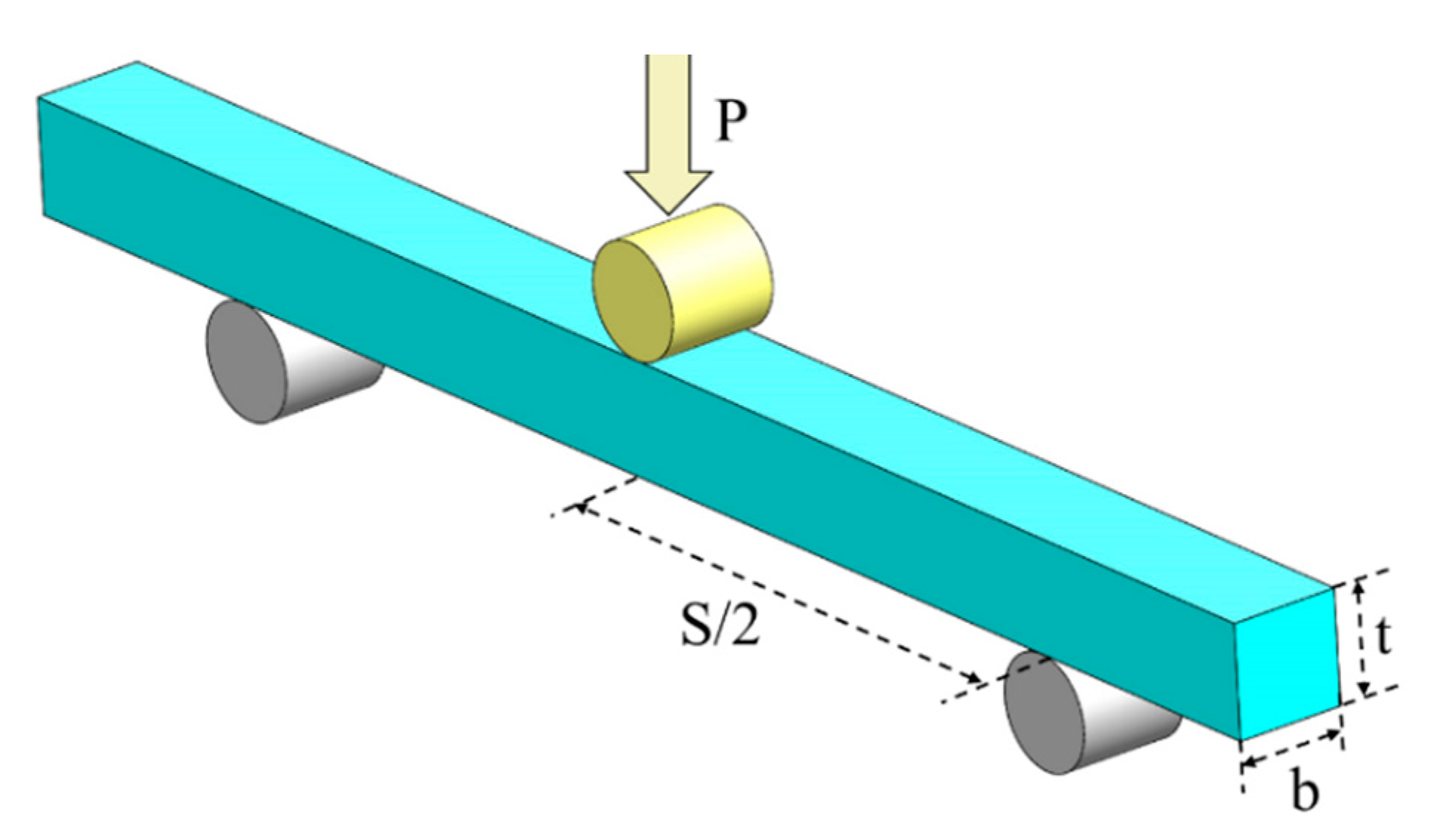
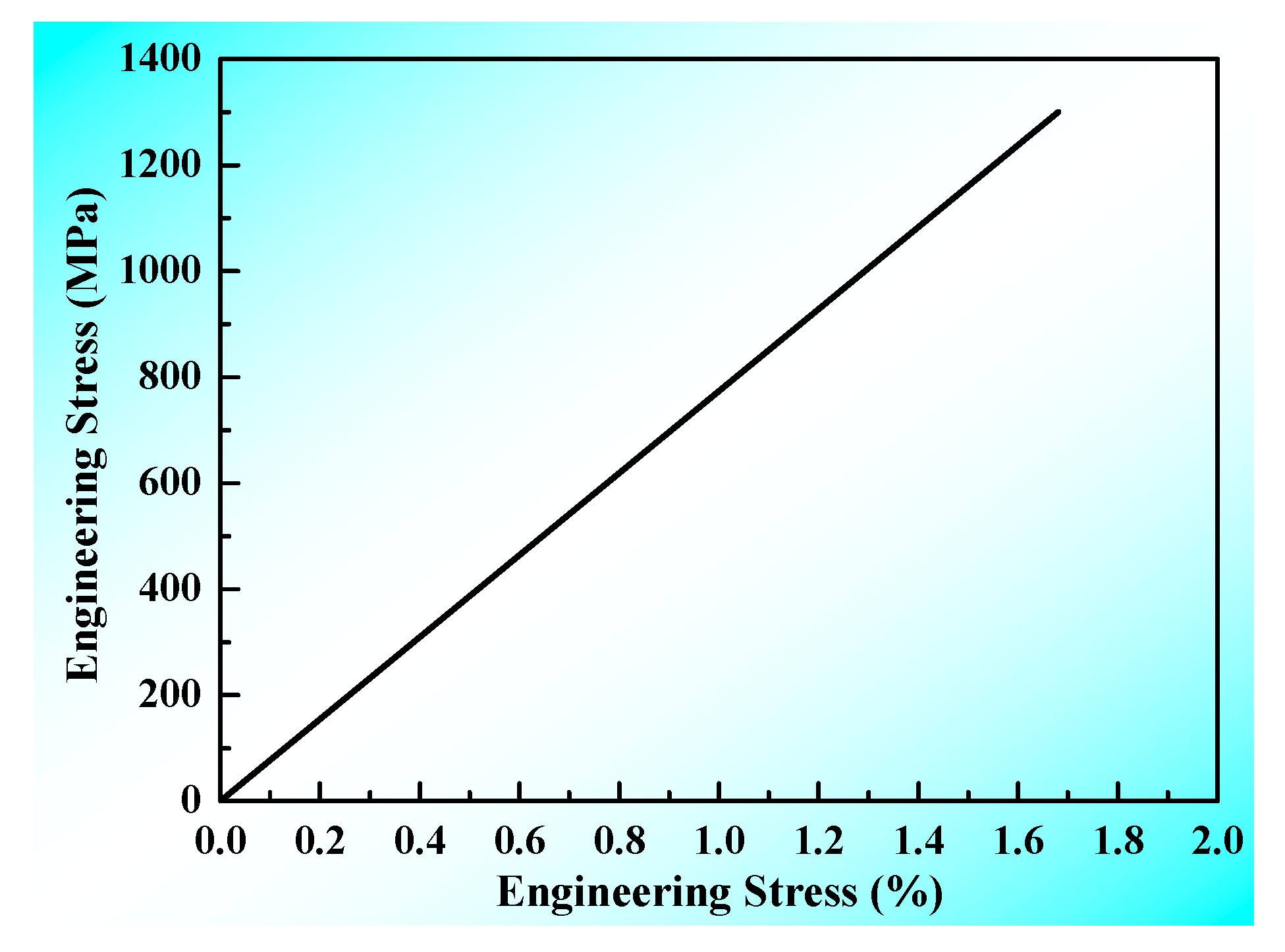
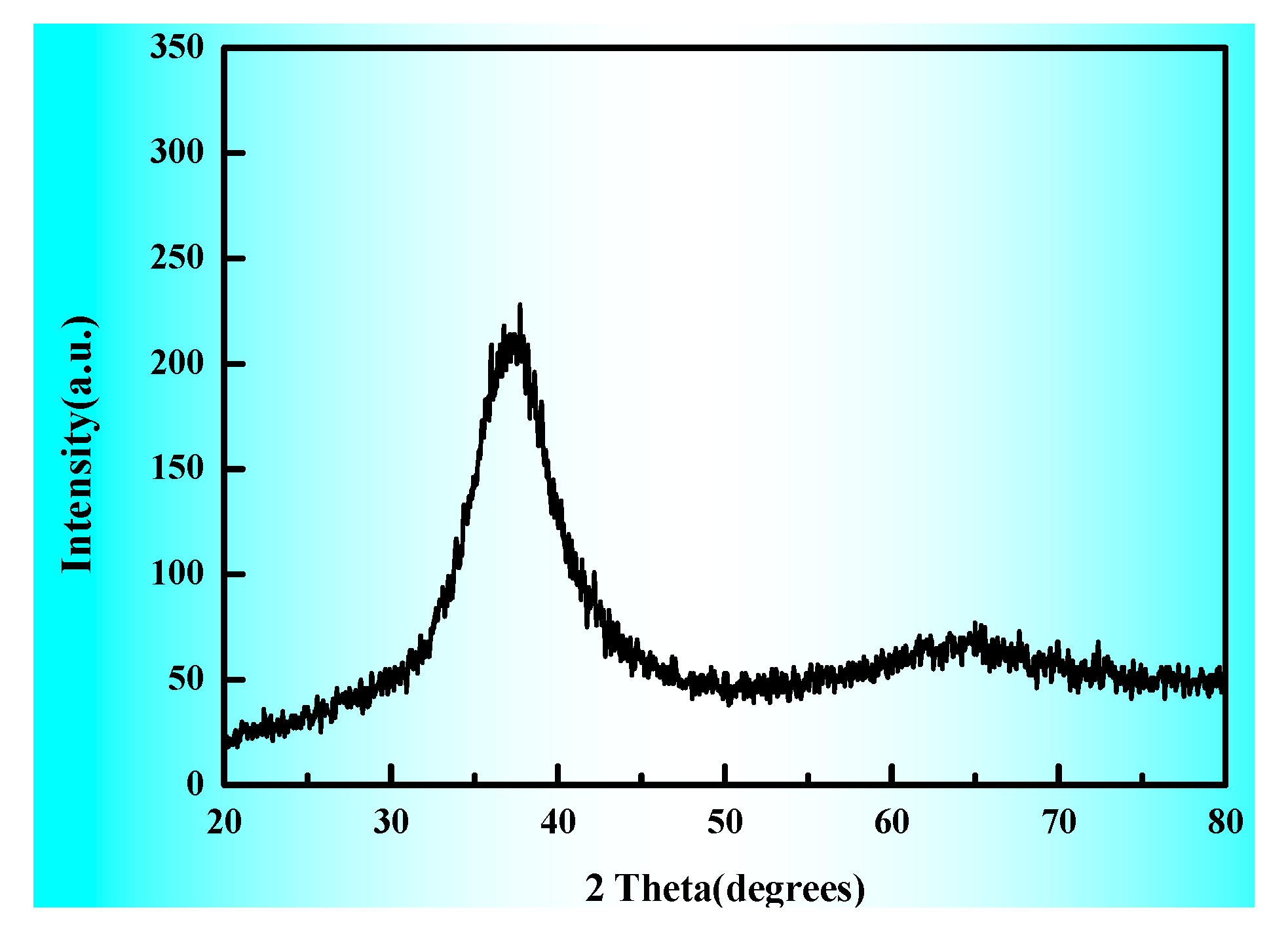
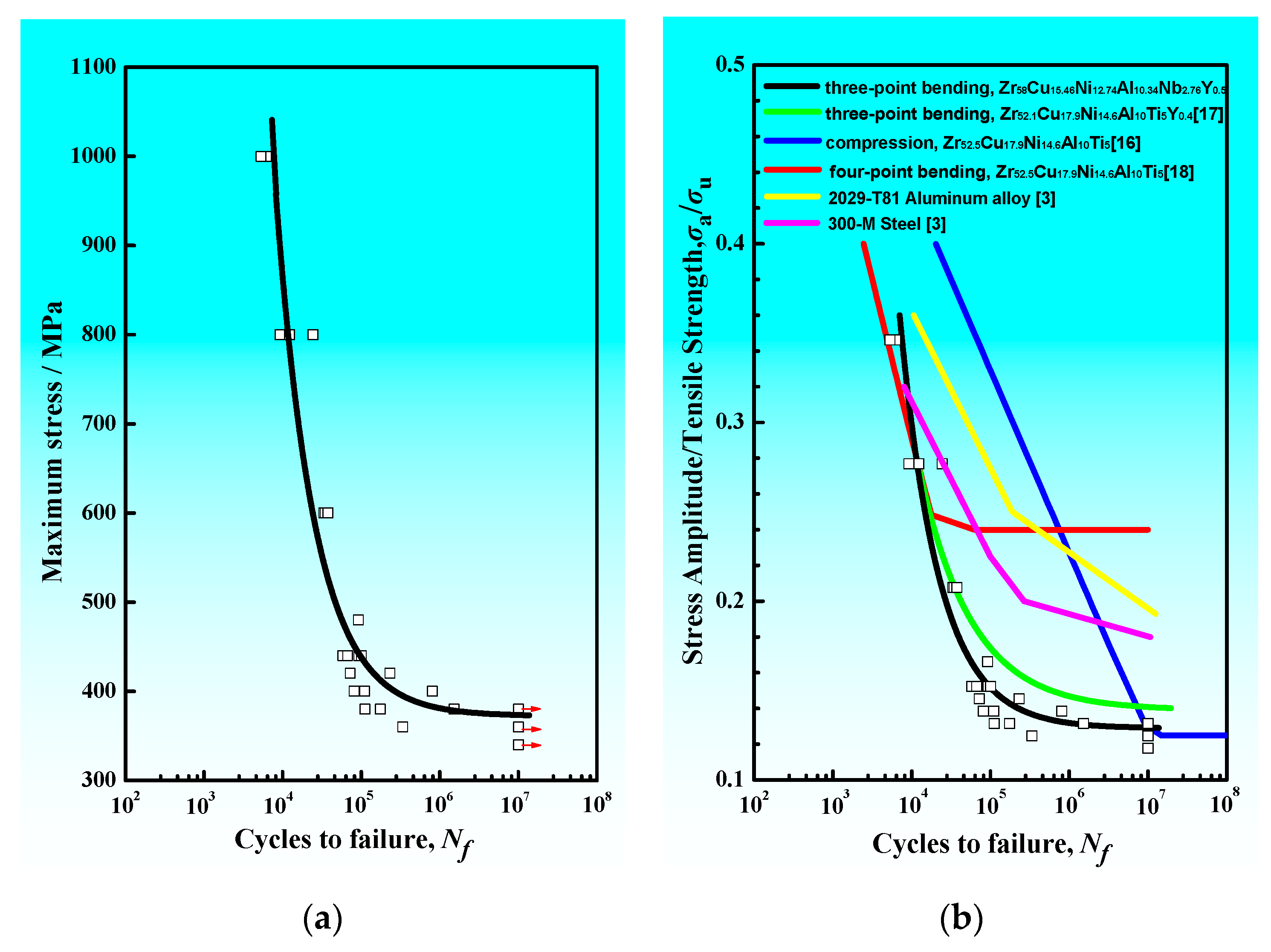
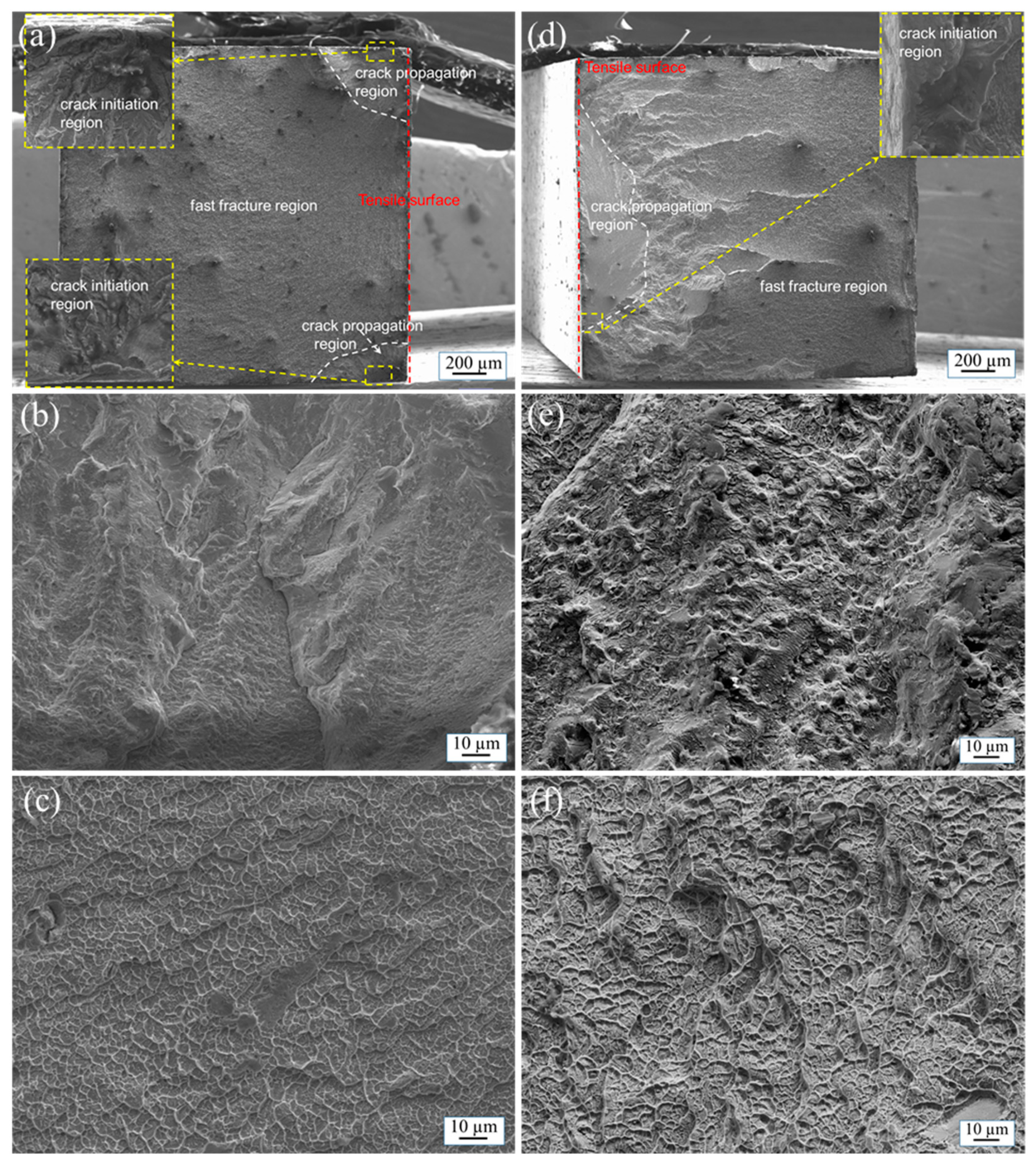
Publisher’s Note: MDPI stays neutral with regard to jurisdictional claims in published maps and institutional affiliations. |
© 2021 by the authors. Licensee MDPI, Basel, Switzerland. This article is an open access article distributed under the terms and conditions of the Creative Commons Attribution (CC BY) license (http://creativecommons.org/licenses/by/4.0/).
Share and Cite
Zhou, S.; Zhang, T.; Li, L.; Yang, J.; Zhang, M.; Wang, C.; Zhang, Y. Fatigue Behavior of Zr58Cu15.46Ni12.74Al10.34Nb2.76Y0.5 Bulk Metallic Glass Fabricated by Industrial-Grade Zirconium Raw Material. Metals 2021, 11, 187. https://doi.org/10.3390/met11020187
Zhou S, Zhang T, Li L, Yang J, Zhang M, Wang C, Zhang Y. Fatigue Behavior of Zr58Cu15.46Ni12.74Al10.34Nb2.76Y0.5 Bulk Metallic Glass Fabricated by Industrial-Grade Zirconium Raw Material. Metals. 2021; 11(2):187. https://doi.org/10.3390/met11020187
Chicago/Turabian StyleZhou, Shichao, Tao Zhang, Lugee Li, Jiedan Yang, Min Zhang, Chengyong Wang, and Yong Zhang. 2021. "Fatigue Behavior of Zr58Cu15.46Ni12.74Al10.34Nb2.76Y0.5 Bulk Metallic Glass Fabricated by Industrial-Grade Zirconium Raw Material" Metals 11, no. 2: 187. https://doi.org/10.3390/met11020187
APA StyleZhou, S., Zhang, T., Li, L., Yang, J., Zhang, M., Wang, C., & Zhang, Y. (2021). Fatigue Behavior of Zr58Cu15.46Ni12.74Al10.34Nb2.76Y0.5 Bulk Metallic Glass Fabricated by Industrial-Grade Zirconium Raw Material. Metals, 11(2), 187. https://doi.org/10.3390/met11020187






